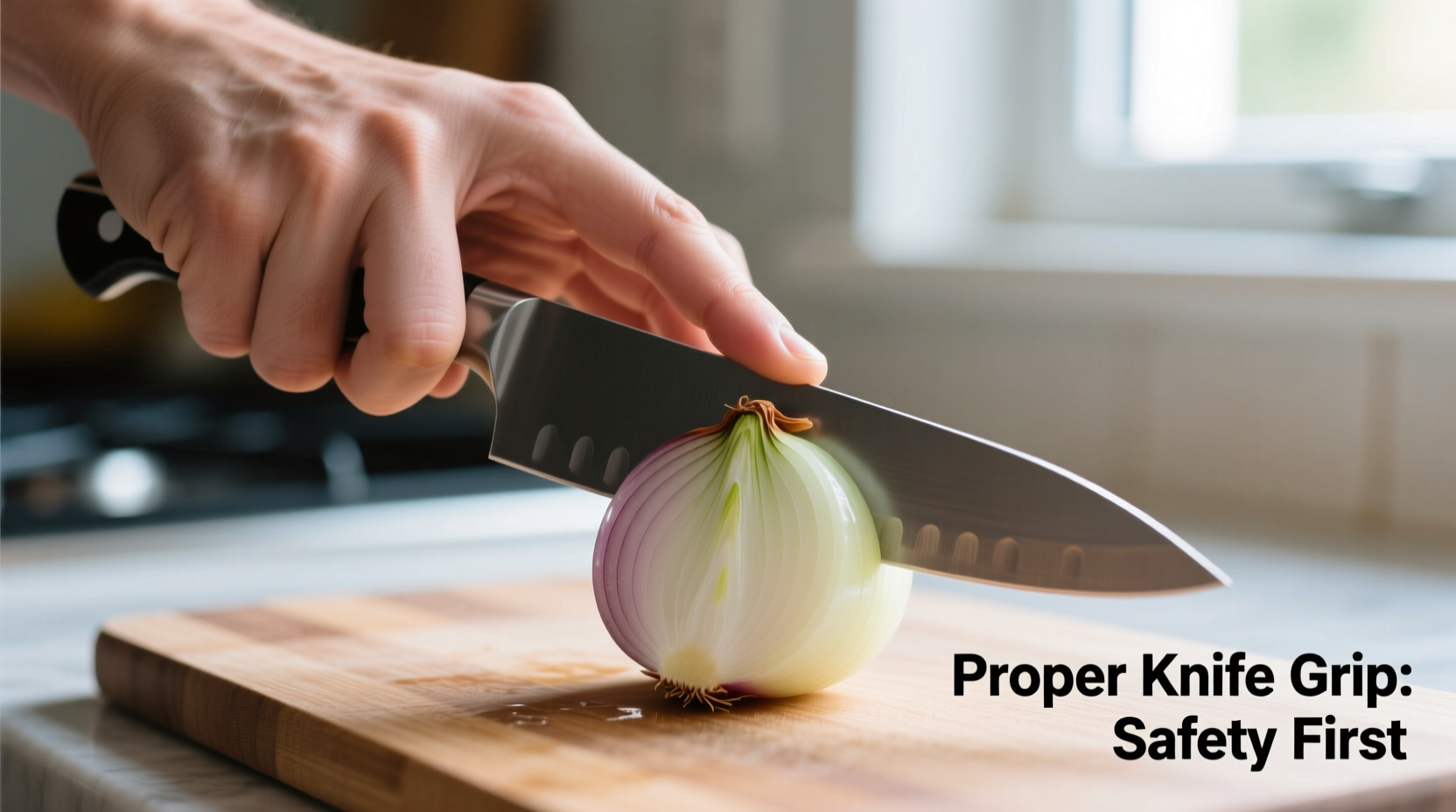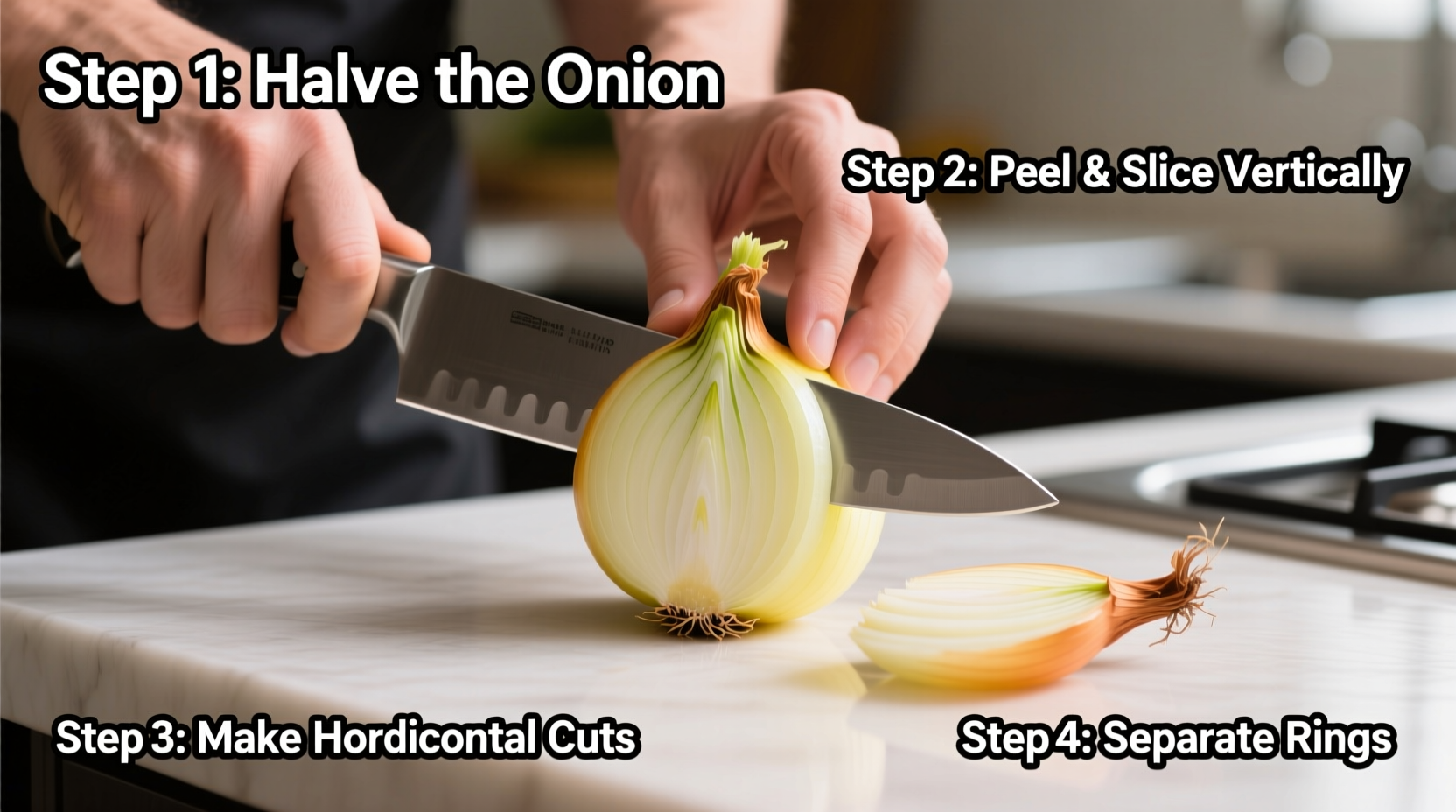Nothing ruins a cooking session faster than tears from improper onion cutting techniques. Whether you're a beginner chef or just looking to improve your kitchen efficiency, learning the professional method for cutting onions transforms a frustrating chore into a quick, tear-free process. In this guide, you'll discover the exact steps professional chefs use to dice onions safely and efficiently, along with science-backed methods to minimize crying.
Essential Tools for Perfect Onion Cutting
The right equipment makes all the difference when learning how to cut an onion properly. While you don't need specialized tools, having the proper basics ensures safety and efficiency.
A sharp 8-inch chef's knife provides the cleanest cuts with minimal cell damage—the primary cause of those irritating onion fumes. Dull knives crush rather than slice, releasing more syn-propanethial-S-oxide (the chemical compound responsible for eye irritation). The FDA recommends keeping knives properly sharpened as part of kitchen safety protocol.
Choose a stable, non-slip cutting board—wood or composite material works best. Avoid glass boards as they dull knives quickly and don't provide enough grip. For those particularly sensitive to onion vapors, consider keeping a small bowl of water nearby or using specialized onion goggles available at most kitchen supply stores.
Step-by-Step Onion Cutting Technique
Follow this professional chef method for perfect onion cuts every time. This technique preserves the root end until the final step, maintaining structural integrity and reducing tear-inducing vapors.
Preparation Phase
Before you begin cutting an onion, refrigerate it for 30 minutes. Cold temperatures slow the enzyme reaction that creates the tear-inducing compounds. While chilling isn't mandatory, the University of Illinois Extension confirms this simple step reduces crying by up to 50%.
Place your cutting board on a damp towel to prevent slipping. Position your onion with the root end facing away from you and the stem end toward you. Using a sharp knife, carefully slice off the stem end about ¼ inch from the top, creating a flat surface. Do not remove the root end yet—this keeps the onion layers intact during cutting.
| Cutting Technique | Best For | Time Required | Tear Reduction |
|---|---|---|---|
| Standard Dice | Sauces, soups, stir-fries | 2-3 minutes | Moderate |
| Julienne Cut | Salads, garnishes | 3-4 minutes | High |
| Thin Slices | Burgers, sandwiches | 1-2 minutes | Low |
| Chiffonade Style | Caramelized onions | 3-5 minutes | High |
Peeling and Halving
After trimming the stem end, peel away the papery outer skin and any dry outer layers. Place the onion flat-side down on your cutting board. With your non-dominant hand in the "claw grip" (fingertips curled under for safety), hold the onion firmly. Using smooth, controlled motions with your chef's knife, cut the onion in half vertically through the root end.
Professional chefs emphasize keeping the root intact during this phase—it acts as a natural binder for the onion layers, preventing them from scattering and reducing vapor release. Only remove the root after completing your cuts, which significantly decreases the amount of irritants released into the air.

Creating Perfect Dices
Place one onion half flat-side down with the root end facing away from you. Make several horizontal cuts parallel to the cutting board, about ¼ to ½ inch apart, stopping just before reaching the root end. These cuts should go across the onion's layers, not through them.
Next, make vertical cuts from the stem end toward the root, again spacing them ¼ to ½ inch apart and stopping short of the root. Finally, slice perpendicular to your previous cuts, starting from the stem end and working toward the root. As you reach the root end, simply remove it and you'll have perfectly uniform dice.
Advanced Cutting Techniques for Specific Recipes
Different dishes require different onion cuts. Understanding when to use each technique elevates your cooking from amateur to professional level.
For soups and stews: Use a medium dice (¼ inch pieces) for even cooking and texture. Larger pieces might not cook through properly, while smaller pieces can become mushy.
For caramelizing: Thin slices work best. Cut the onion in half, then make very thin slices perpendicular to the layers. This maximizes surface area for the Maillard reaction while maintaining structural integrity during the long cooking process.
For salads: Try the julienne cut—thin matchstick pieces that add texture without overwhelming other ingredients. This technique requires slightly more skill but produces restaurant-quality results.
Science-Backed Methods to Reduce Tears
Understanding why onions make you cry helps implement effective prevention strategies. When onion cells are damaged during cutting, enzymes convert sulfoxides into sulfenic acids, which then form syn-propanethial-S-oxide—a volatile gas that reacts with moisture in your eyes to create sulfuric acid.
Based on research from the Journal of Agricultural and Food Chemistry, these methods significantly reduce tear production:
- Cut under running water: The stream carries away vapors before they reach your eyes
- Use a sharp knife: Creates cleaner cuts with less cell damage (up to 30% reduction in vapors)
- Cut near a flame: Gas stove flames draw vapors upward (use with caution)
- Chill onions first: Slows enzymatic reactions as mentioned earlier
Contrary to popular belief, chewing gum or placing bread in your mouth doesn't work—the only proven methods involve either preventing vapor formation or intercepting the gas before it reaches your eyes.
Common Mistakes to Avoid When Cutting Onions
Even experienced cooks make these errors that compromise both safety and results:
- Removing the root too early: Causes layers to separate, creating uneven cuts and more vapor release
- Using a dull knife: Requires more force, damages more cells, and increases tear production
- Cutting too quickly: Sacrifices precision and increases accident risk
- Improper hand positioning: Exposes fingertips to the blade—always use the claw grip
Remember that proper knife skills develop with practice. Start slowly, focusing on technique rather than speed. As the Culinary Institute of America teaches, consistent practice builds muscle memory that eventually makes proper cutting technique second nature.
Storing Cut Onions Properly
After mastering how to cut an onion, proper storage preserves freshness and flavor. Place cut onions in an airtight container in the refrigerator—they'll stay fresh for 7-10 days. Never store cut onions in metal containers, as this accelerates spoilage through chemical reactions.
For meal prep, consider portioning cut onions into recipe-sized amounts before storing. This prevents repeatedly exposing the entire batch to air, which degrades quality faster. Frozen diced onions work well for cooked dishes (though not raw applications) and maintain quality for up to 6 months.











 浙公网安备
33010002000092号
浙公网安备
33010002000092号 浙B2-20120091-4
浙B2-20120091-4